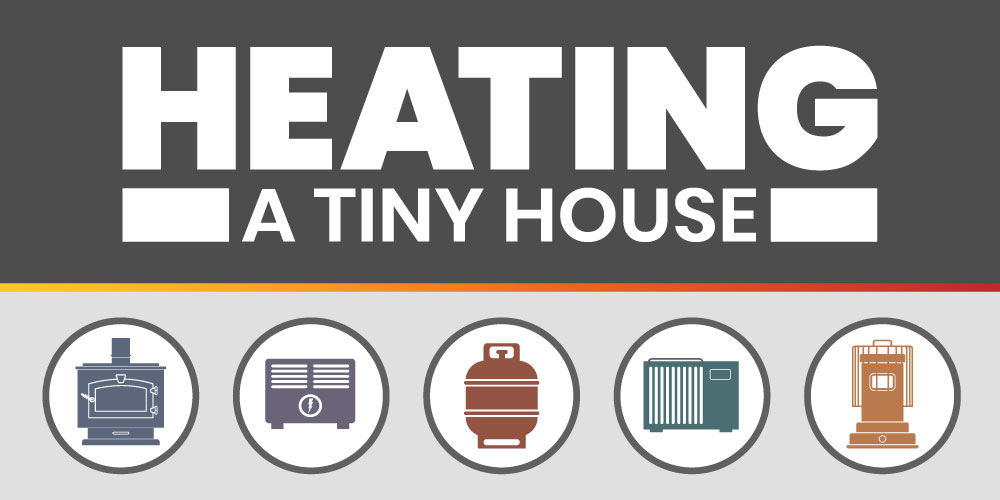
NAVIGATION
Heating a tiny house in the winter has it’s challenges. Even living in the sunny South we’re doing research into heating appliances. We have been talking to folks in the area about what they use and we’re pondering between a few options.
Choosing Which Tiny House Heater Option Is Right For You:
There are a few things to consider when it comes to choosing a heater for your tiny house and it boils down to a few key things. First off will you be on the grid or off the grid. Off grid winter heating will narrow your options to a few, while if you are on the grid, you have many other options.
Once you’ve determined your grid status, you’ll need to consider the practicalities of your lifestyle. What do you want your life to be like day to day and what is and isn’t going to work for you. Many people idealize a wood stove, but they don’t think about waking up in the morning to a cold house before they can stoke a fire up again. For me I just wanted the simplicity of pressing a button, so I opted for a heat pump in my tiny house.
Sizing your heating system is critical to keeping your house nice and warm without getting too hot. I’ve been in my fair share of tiny houses where a heater either couldn’t keep up with how cold it was outside and I’ve also been in an equal number of tiny houses that were so hot we had to open windows in the dead of winter to prevent us from sweating. For me, I needed a tiny house heater that made about 3,000 BTUs for where I live in N.C. Use a BTU calculator to figure out what is right for you tiny house.
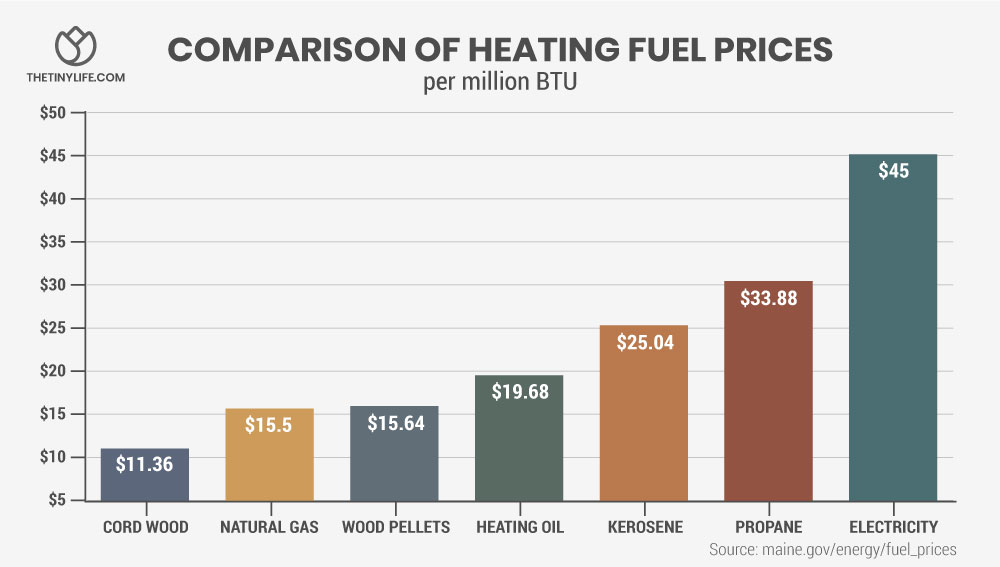
Finally price, money is important. Some setups cost more on the front end and less over time, while some are cheaper to start with and require on going costs or the costs are higher over the long term. I’ll dig into each of these as we go through all the options.
Electric Heater Options For A Tiny House:

Electric Heater Pros
- Inexpensive
- Easy to find at any store
- No installation, just plug in
- Can find the right BTU size for you
Electric Heater Cons
- Takes up floor space
- They’re not particularly good looking
- Expensive to run, draws a lot of power
- Not practical for off the grid
Electric
Cost
- $40-$100
Probably the easiest, cheapest option right now and fairly efficient in terms of heating a space our size. We could get through the rest of the Vermont winter comfortably with our current electric heater but it’s certainly not attractive and it takes up floor space. This option also requires you to be on the grid, most of these heaters start at 1,500 watts for a around 5,000 BTUs and go up from there. With electrical loads like that, you’d have to have a very expensive solar array to power that in the winter.
The great thing about electric heaters is that they’re super cheap, we picked our us for around $45 and you can find that at any major big box retailer. The do work well to heat a space and you have two main options: forced air and radiant heaters.
Forced Air is for when you want to heat up a space fast, the fan in them often is pretty loud, but you can heat the space quickly which is nice when we come home from work and want to turn up the heat. While they are noisy, this is a good option for us because we are out and about often, so we turn down the power while we are gone.
Radiant Heat is for when you can take the time to let a space to heat up. These are often oil filled radiators style heaters, which are near silent in their operation and gently heat the air around them. If you’re on the grid and going to be spending a lot of time in the house this is a good option because you can heat the house up and then let it coast.
Since this would only be a temporary situation right now, seeing as we will be hooking up our solar panels this summer and investing in a small wind generator later in the year. We’re also contemplating micro-hydro electric but that’s for another post!
Heating A Tiny House With A Wood Stove Or Pellet Stove:

Wood or Pellet Stove Pros
- Cozy fire is nice
- Less impact on environment
- Can be used to cook, heat and more
- Fuel generally cheap
Wood or Pellet Stove Cons
- Medium to high initial cost
- Needs large clearances
- Hard to find one small enough
- Takes work and can be messy
Wood or Pellet Stove Cost
- $800-$2,000
We met a tiny house dweller on a farm nearby who uses a wood fired stove. She loves it because she enjoys the processing of the wood and the look of the wood stove in her tiny house. She’s also able to heat water on top for tea making or dish washing. When electricity has gone out during the winter she has had no problems keeping warm and heating food.
There is a homey feeling to a wood stove that you just can’t quite achieve with gas fueled units. However, a wood stove is messier, with ash falling through and wood chips and bark trailing in from the wood.
Tiny House Wood Stove Options
It’s not easy to find a small wood burning fireplace, most are just too big for a small space. Jotul is a popular wood and gas stove company here in Vermont and folks tell us they are the best. We’re not sure they make one small enough for our space so we’re going to check out their showroom this week. We’ve also been looking at Dickinson Marine wood stoves as well as Woodstock soapstone stoves made regionally over in New Hampshire. Kimberly Stoves are also an option, but are expensive.
Finally Hobbit Wood Stoves are a popular options because it’s one of the few best heating options for small homes due to it’s size. It’s designed for small spaces so it’s a serious contender for wood stoves for your tiny house.
There are a few considerations you need to make when it comes to having a wood stove in your tiny house. First is getting a stove small enough for you tiny house, if you don’t size it right, it will generate too many BTUs and leave you roasting inside your tiny house. This happens to most people when they try to heat their small house with wood because it’s hard to find a wood stove that’s small enough.
Next is the space it takes up. Wood stoves require a lot of space just in their size, but also in clearances. You often need to give a good amount of space around the wood stove to make sure it’s safe and doesn’t catch nearby surfaces on fire.
Finally consider your lifestyle and how a wood stove will impact that. Wood stoves require frequent tending, wood needs to be chopped, stacked, then hauled in and finally the stove needs to be cleaned. It’s a lot of hard work and it can be a messy affair when soot gets out. Pellet wood stoves I’ve found to be a happy medium between ease of use, easy temperature maintenance and ease. You can’t really make your own pellets, but there is a strong case to be made for them.
Kerosene Heaters For Indoor Use:

Kerosene Heater Pros
- Vented or un-vented
- Thermostat Controlled
- Burns very clean
Kerosene Heater Cons
- Medium to high initial cost
- Uses fossil fuels
- Hard to find fuel sometimes
Kerosene
Cost
- $80-$1,500
Several people have told us that kerosene is worth the set-up and cost of fuel. It burns really hot and it is 90% efficient according to a local gas supplier. In terms of BTU output kerosene beats out propane, but it’s not as clean burning and is more polluting to the environment although they make filters now that reduce emissions.
Kerosene is the cheaper option when compared to propane, but we have found it’s not as easy to find. I’m also most concerned about carbon monoxide so a vented heater would be essential in such a small space. The Toyotomi Laser kerosene heaters are an option, but I’ve read a lot of mixed reviews. Another option is a free standing kerosene heater like a Dyna-Glo heater, which is nice because you can remove it when not using it. The main downside is that it isn’t a direct vent heater, so you need to be careful about air quality and safety. Overall, kerosene seems like a good option for back-up to electric heating,m but after more online research we are considering this option less and less.
Tiny House Propane Heater Options:

Propane Heater Pros
- Vented or un-vented
- Thermostat Controlled
- Burns very clean
Propane Heater Cons
- Medium-to-high initial cost
- Uses fossil fuels
- Hard to find fuel sometimes
Propane
Cost
- $80-$1,500
Clean burning, efficient, relatively inexpensive and easy to find we’ve seriously considered the propane option. Our stove currently helps heat our house and it’s run off propane so hooking up a heating element wouldn’t be too difficult.
The Dickinson heater is an attractive and efficient option and was a contender to the wood stove option in our deliberations, but after talking with many other tiny housers, we heard a lot of bad things. Mainly that they look nice, but don’t put out enough heat. Even though the Dickinson heater says it puts out 4,000-5,500 BTUs, many people have called that into question. It also lacks a thermostat which was a deal breaker for us.
The other really good option if you’re considering this is a Mr. Heater propane heater. This was great in the south because we didn’t always need a big heater, so we could store it away when we needed to, but on those colder than normal nights we could break it out and heat our tiny house up fast. While it uses 1lb propane canisters, we felt it was very wasteful, so we got the 20lb propane tank connector hose (the size your grill runs off of).
What I like about propane is that it’s pretty cheap, I run my tiny house off of it and we spend about $100 per year heating the house, using it to cook and for my hot water heater for my tiny house. The other thing is you can get the tanks refilled almost anywhere and I prefer to use the 20lb tanks because even when they are full, I can carry them pretty easily.
Tiny House Heat Pumps:

Heat Pump Pros
- Can heat and cool
- Thermostat Controlled
- Takes up no floor space
- Very efficient
Heat Pump Cons
- High initial cost
- Requires some expert help to setup
- Doesn’t work in very cold climates
Heat Pump Cost
- $800-$3,500
This is a good option for people who live on grid, because heat pumps are getting more and more efficient. In really cold locations this should generally be avoided because the system functions by capturing any available heat from the air and concentrating it to heat the home. Once you get to around 30 degrees, most units have electric heating coils to boost the system, but that puts you back in the boat of standard electric heating.
The upside to heat pumps is that the provide heating and cooling for your tiny house, which is what I ultimately decided for my system. While it is difficult, you can run a mini split off solar with a large enough system and an efficient enough system.
The main brands you want to look for is Mitsubishi and Fujitsu, both make good units that are a high SEER rating which is a measure of how efficient they are. You’ll want to find a unity that is at least a SEER 20 for on grid use, if you’re off grid you want to be as high of a SEER rating as possible. At the time of writing this, Carrier just launched a new mini split that is a SEER 42 which is astounding.
What’s great about mini splits is you can mount the air handler on the wall so it doesn’t take up any floor space. It is also programmable, so the thermostat can turn on and off when you want and some even allow you to control via your phone so you can turn it on remotely to come home to a toasty house.
Best Heating Options For A Tiny House:

Now that we’ve broken down some of the major types of heaters for a tiny house, I want to share what I think are the best options when it comes to heating a tiny home.
1. Carrier Infinity Heat Pump – $2,500
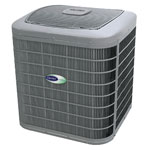 It’s hard to beat these heat pump mini splits because that can heat and cool all in one unit. Their high efficiency inverter heat pump with a SEER of 42 is insane, I have yet to setup one, but I’m guessing it can heat at around 500 watts which is unheard of.
It’s hard to beat these heat pump mini splits because that can heat and cool all in one unit. Their high efficiency inverter heat pump with a SEER of 42 is insane, I have yet to setup one, but I’m guessing it can heat at around 500 watts which is unheard of.
2. Heat Storm Deluxe Indoor Infrared Wall Heater – $80
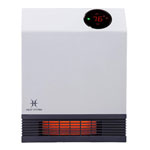 This is the best alternative I’ve found to the popular Envi Flat Panel Heater which is no longer made. What’s great about this heater is it plugs right into an outlet, its very low profile so it doesn’t take up much space because it mounts right on the wall. The kicker is that since it’s just a plug in heater, you can remove it easily and store during the warmer months. At $80 and a 10 minute install it’s hard to beat it if you’re on the grid.
This is the best alternative I’ve found to the popular Envi Flat Panel Heater which is no longer made. What’s great about this heater is it plugs right into an outlet, its very low profile so it doesn’t take up much space because it mounts right on the wall. The kicker is that since it’s just a plug in heater, you can remove it easily and store during the warmer months. At $80 and a 10 minute install it’s hard to beat it if you’re on the grid.
3. The Hobbit Small Wood Stove – $1,100
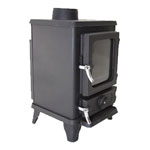 For those who want to go off grid with your heating you’ll need a very small wood stove and the Hobbit Wood Stove is one of the smallest ones out there. While you could go with the Kimberly Stove, its very expensive. At 18 inches x 12 inches you can’t get much smaller and still feed it wood, so this is a great option for those who want to heat and cook with wood.
For those who want to go off grid with your heating you’ll need a very small wood stove and the Hobbit Wood Stove is one of the smallest ones out there. While you could go with the Kimberly Stove, its very expensive. At 18 inches x 12 inches you can’t get much smaller and still feed it wood, so this is a great option for those who want to heat and cook with wood.
4. Mr. Heater – MH9BX Propane Heater – $69
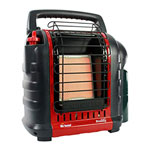 This is a great heater and super practical. It runs off of propane which you get almost anywhere, it’s easily portable and it puts off a lot of heat when you need it. I think everyone should have a Mr. Heater regardless of what heating option you go with as a back up heating source. It can be fuels by 1lb tanks or you can get the hose for grill size tanks.
This is a great heater and super practical. It runs off of propane which you get almost anywhere, it’s easily portable and it puts off a lot of heat when you need it. I think everyone should have a Mr. Heater regardless of what heating option you go with as a back up heating source. It can be fuels by 1lb tanks or you can get the hose for grill size tanks.
5. Oil Filled Radiator Heater – $72
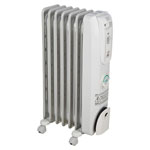 This is another good option and make the cut for my list because they’re good at heating spaces, you can wheel it in when you need heat, but still store it when it’s warmer weather. The oil filled radiator means you have a nice even heat that doesn’t make much noise. The down side to these is that use up a lot of energy, so if you’re off grid it’s not an option and if you are on grid, power bills can be high.
This is another good option and make the cut for my list because they’re good at heating spaces, you can wheel it in when you need heat, but still store it when it’s warmer weather. The oil filled radiator means you have a nice even heat that doesn’t make much noise. The down side to these is that use up a lot of energy, so if you’re off grid it’s not an option and if you are on grid, power bills can be high.
Considerations When Heating Your Tiny House:

The last few points here to consider are safety, indoor air quality, and insulation. Obviously safety is paramount and many of these flame based heaters can lead to fires if you’re not careful. If you have smaller children, a heater on the floor presents a hazard to kids touching it. Indoor air quality is something to consider too. When in such a small space, as you burn fuels you’re using up your oxygen and putting out gasses like carbon monoxide which is serious business. Venting is always preferable, but it’s a trade off because venting takes up a lot of space and need to be done correctly.
Finally if you’re build your own tiny house, it’s important to make sure your house is well sealed and spending more money on insulation upfront will result in a lot less money being spent later on. Don’t skimp on your insulation and choose the highest quality windows that you can afford.
Ultimately our main criteria for heating units include efficiency, safety, cost and environmental impact. We are deliberate in every choice we make with the house and want to make the best choice for our space, the environment and our wallets. It’s not an easy choice but a very necessary one now that we live in a state with actual winter. It’s definitely going to be easier to heat the tiny house than it was to cool it in the hot, humid Southern summers!
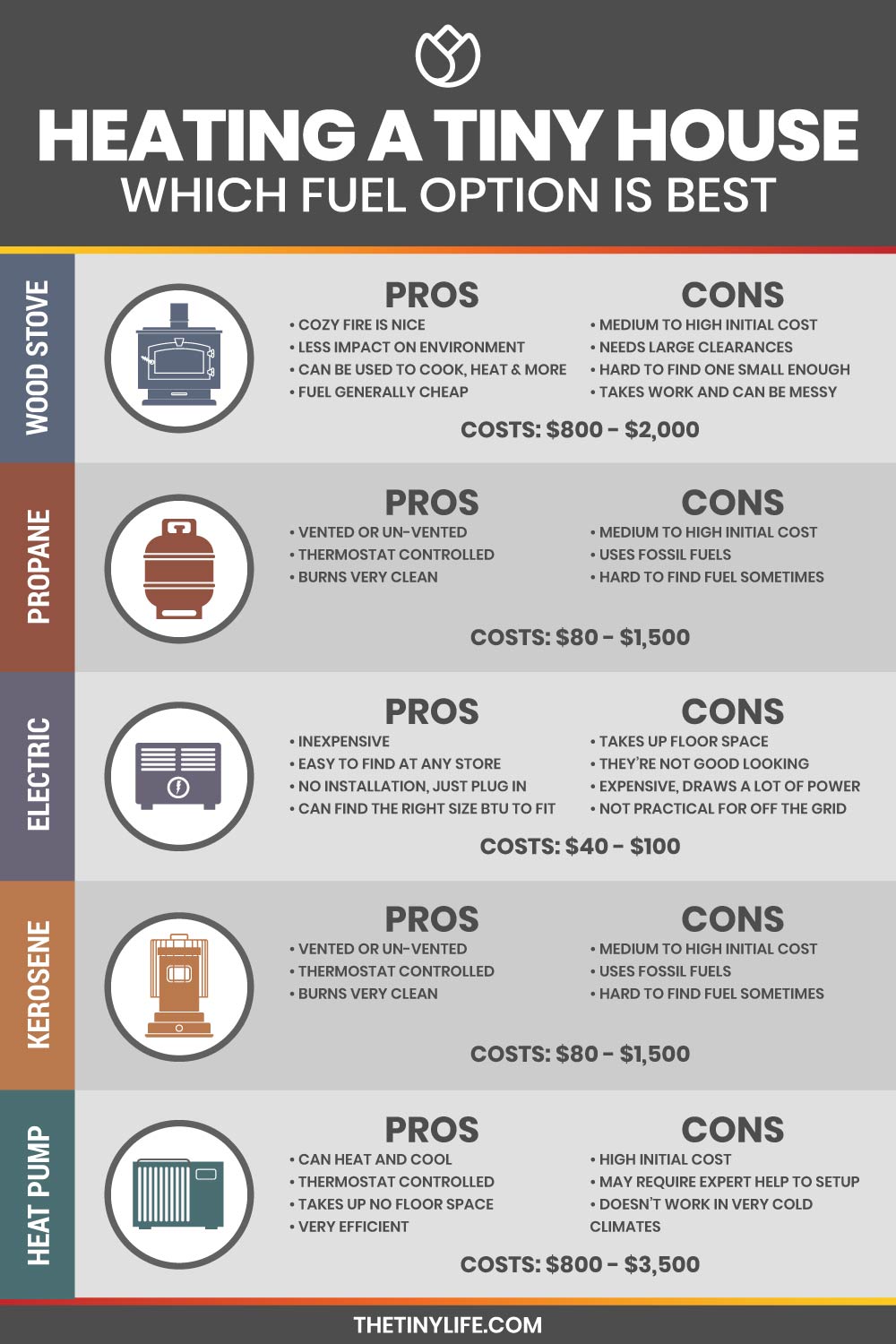
Your Turn!
- What do you recommend for heating a tiny space?
- What options have you considered?
 Choosing A Heater
Choosing A Heater Electric Heaters
Electric Heaters Wood/Pellet Stoves
Wood/Pellet Stoves Kerosene Heaters
Kerosene Heaters Propane Heaters
Propane Heaters Heat Pumps
Heat Pumps My Heater Recommendation
My Heater Recommendation
Thank you for the information. I am going to attempt to convert a small horse trailer into a tiny home. I will let you know how it goes. Thanks again ! Greg
Great article. Thank you.
One note on wood stoves, at least if you need or want insurance.
Many of the really small stoves on the market are designed for boats or RVs and are NOT certified for use in residential homes, this will very likely be a problem if you select one of those models.
Having said that there are some very nice smaller stoves which are certified, but also check the rear or corner clearances. The closer you can safely get to the wall the more room you will have inside. ( note: this pretty much rules out cast iron stoves as they generally have larger 12 or even 16 inch clearances to combustibles )
You might want to check Drolet or True North, both made in North America and both make small stove options with decent clearances as well.
When I built my house [1900 sq, feet] on top of a mountain in Western North Carolina, I put in 2 propane wall heaters, [one in the basement bedroom and one in the attic bedroom] and a propane fireplace on the main floor. With the cold temperatures and fierce winds we have up here, I am extremely pleased with the efficiency of these heaters. After 2 years I removed the attic heater and sold it for what I paid for it since we never turned it on one time.
I’m completely fed up with all this phony climate change crap they they have been feeding us about the world coming to an end if we don’t stop burning fossil fuels. Yep! They are still peddling that baloney about gas lakes miles under the surface of the earth being the result of hordes of dead dinosaurs. Their controlled media keeps pumping out that garbage and the public keeps buying it. Cow flatulence, gasoline engines, people breathing, any excuse at all for more controls over the population. Thank god, the electric car promotion died. How much more insanity will they lay on the people? How much more of this crap will the public swallow.
Seeing the handwriting on the wall of escalating energy prices and quite possible unavailability of propane in the near future, I had a man come and build a chimney on the West side of the house and I put a wood stove in the basement. I got one that could heat the whole house and could also be used to heat water and cook on. We’ve got tons of wood on the mountain so fuel will not be a problem. Just hope those billionaires flying over in their huge jet airplanes don’t see the footprint I’m making with my wood stove.
I want that electric oil heater how can I order that oil heater?
Oil up